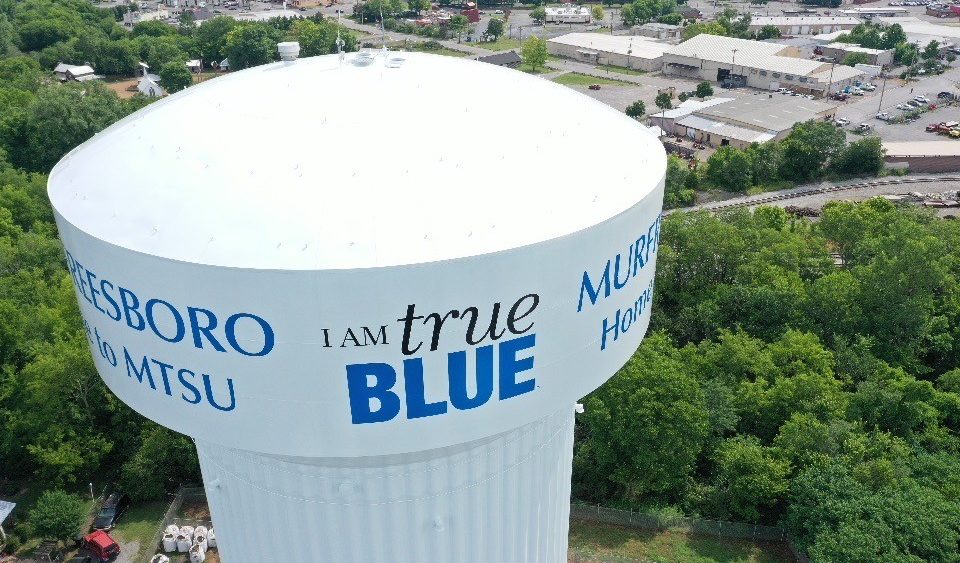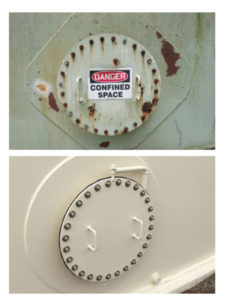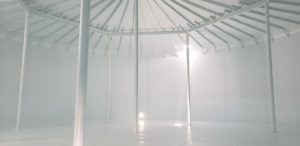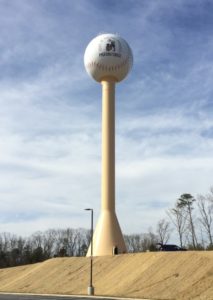
Corrosion – An Attack on our Most Visual Assets
One of the most troublesome, yet often overlooked enemies of the water/wastewater industry is corrosion. It is estimated that the direct cost of dealing with corrosion in the United States totals $276 billion annually, $36 billion of which is spent in the water/wastewater (W/WW) industry alone. This estimate comes from a two-year study performed by the Federal Highway Administration (FHWA) analyzing the financial effects of corrosion in nearly every sector of US industry. Owners and facility managers too often forgo the cost implications of corrosion as it may not be an issue that requires immediate attention. Great strides have been made within the industry to address corrosion; however, it is important that the discussion on corrosion continues to evolve. As an owner, how do you minimize the effects of corrosion and extend the life of your assets?
For the purposes of this discussion, we will take a closer look at what is likely an owner’s largest and most visible asset, a welded steel storage tank. Welded steel tanks are constructed in many different sizes, styles, and configurations, all of which have their own unique challenges. This article offers a general overview of protection against corrosion using coating systems on steel tanks, but it is highly recommended that a specific plan be put in place to best serve each individual situation.
What is Corrosion

Example of a manway door with visible signs of corrosion (top) and one that has been recently recoated (bottom).
The National Association of Corrosion Engineers (NACE), now known as The Association for Materials Protection and Performance (AMPP), describes corrosion as a naturally occurring phenomenon commonly defined as the deterioration of a material (usually a metal) that results from a chemical or electrochemical reaction with its environment. Engineered metals are some of the most susceptible materials to corrosion as refined metal like steel beams and plates naturally want to return to their original state as iron ore. Though corrosion is most often thought of as just rust, it can take on many different forms across materials, including concrete. Protecting and maintaining assets in the W/WW sector is difficult as moisture and chemicals speed up the corrosion process.
Corrosion is usually found on aging or neglected infrastructure in areas that are not properly maintained or where coating defects are occurring. Spot corrosion is often found in isolated areas that are hard to reach, have sharp corners, near penetrations, or around two different metals. Corrosion in these areas is often a product of oversight by the coating applicator or maintenance crews.
Assets can also show signs of uniform corrosion, usually as widespread rust or complete delamination of the coating system. This type of corrosion is often seen when the material was not mixed or applied properly or when environmental conditions were not met during the coating application.
Coating Process
There is more to a successful coating job than meets the eye. There are two primary factors that control the longevity of a coating system: surface preparation and coating application. Both steps have their own unique challenges and can vary from project to project.
A reliable, long lasting coating job starts with the surface preparation and is the foundation on which the coating system is based. If the prime or base coat fails, it will almost always signal the failure of the entire coating system. To ensure a proper foundation is established, an abrasive blast is used to remove all paint, rust, and other contaminants from the tank steel. Removing all products that may interfere with proper curing of the paint is necessary to create an adequate surface profile for the paint to bond. It is critical to understand and check the level of surface preparation needed for each specific coating system. Overcoating the existing paint is a viable option in certain situations; however, this should be assessed by the engineer in conjunction with the coating manufacturer.
Once the desired surface preparation is achieved, the coating system must be applied in a timely manner as flash rusting will occur with prolonged exposure to the atmosphere and with changing environmental conditions. If flash rusting does occur, the surface will need to be prepped to the desired level again before the coating can be installed as the presence of surface rust or other surface contaminants could lead to a pre-mature failure of the coating system.
There have been many advancements and changes in the coating industry over the past 20 years and paint is no longer simply “just paint.” This is especially true with the National Sanitation Foundation’s (NSF) upcoming changes to NSF 61/NSF 600 requirements. Understanding these regulatory changes and knowing which product to use and when will help prolong the life of an asset. Often, the upfront cost of a coating system is the owner’s main consideration when specifying products. However, the use of more expensive specialized coatings may save both money and maintenance headaches in the long run. The engineer should work with the owner and the coating manufacturer to tailor the specified coating system to the project’s exact needs and budget.

Interior of a 3MG welded steel ground storage tank.
After choosing the correct coating system, it is imperative that the specified product is applied and cured as designed. Application of the coating system should be applied in the correct number of layers and within the mil range or thickness specified by the manufacturer. Any deviation from the specified mil range could lead to problems with the coating system. Additionally, the contractor is often required to hand apply a brushed coat or “stripe coat” along corrosion prone areas such as weld seams, ladder connections, penetrations, and bolted connections before the final coat of paint. Application of the stripe coat is helpful in minimizing problems in these hard to reach areas.
One of the biggest obstacles during the application and curing phase is monitoring the environmental conditions in the area. Factors such as ambient temperature, surface temperature, relative humidity, and dew point affect how the coating should be mixed, when the coating can be applied, and how well it cures. It is important that a qualified contractor be used as they bring a familiarity with the products and an understanding on how to apply properly under a range of environmental conditions. The engineer should work directly with the contractor and manufacturer to make sure the product is applied properly and as specified.
One of the most critical but often absent aspects of the coating application is the project’s oversight. Whether it be oversight by a dedicated third-party inspector, owner’s field inspection, or an engineer resident project representative (RPR), it is paramount to have a qualified “set of eyes” in the field to observe and document the work occurring. The inspector needs to be onsite for all critical hold points on the project to check the level of surface preparation, environmental conditions, mixing procedures, application process, and dry film thickness (DFT) of each coat of paint applied. Making sure the coating system is installed as specified by the contract documents and the manufacturer’s recommendations are essential to ensure a long-lasting coating project. Having a qualified representative in the field working with the contractor to catch potential mistakes and safety lapses as they happen will almost always extend the life of the coating system saving the owner future maintenance cost over the service life of the coating system.
Maintenance
Once the contractor has completed all coating work on the steel tank, the countdown begins for the 1-year inspection. Typically, any issues during the coating process will show themselves during this time. At the 1-year inspection, the tank is fully drained and cleaned to allow the contractor, owner, engineer, and inspector (if used) to do a thorough inspection of the tank. If any issues are found, the contractor will mobilize to repair these items as soon as possible. Once all items are corrected, the tank will be put back in service and deemed complete.
Most states require inspections to potable water tanks every five years. Five-year inspections can be completed using a diver or remotely operated vehicle (ROV) given there are no suspected major issues with the tank. During this time, it is also good practice to clean the tank’s exterior, freeing it of mold and mildew.
Isolated ground storage tanks situated in wooded areas present unique maintenance challenges. Periodic pressure washing of these tanks will help extend the life of the coating system.
During the life of a tank, if modifications are made to the tank – such as the install of communications, SCADA, mixing systems, etc. – it is important to repair any damage that may have been caused to the coating system.
The life-span of a tank coating system can vary greatly depending on the coating system used, regular maintenance procedures, and location. Once the coating system has reached the end of its service life, it is highly recommended that a full inspection of the tank be completed by an experienced inspection service. By fully draining and cleaning the tank, all problematic areas can be identified and properly documented ahead of the repair. This will reduce the chances of a surprise repair during the recoating process.
Summary

The Jake Thomas elevated water tank in Pigeon Forge, TN, is an example of an aesthetically pleasing water tank. The artistic paint treatment is due to its prominent location in a local baseball complex.
Corrosion is one of the biggest issues facing an owner in the W/WW industry today and it has never been more important to fully understand the ins and outs of the coating industry. Water tanks often serve as billboards for a water system and its surrounding community. A well-maintained and aesthetically pleasing water tank can have a positive impact, giving the community an increased level of confidence in the water service provider and an overall comfort in the water they are drinking. Application and qualified oversight of the correct coating systems for assets such as welded steel tanks will help owners reduce long-term costs while keeping their assets looking and performing at their peak for year to come.








